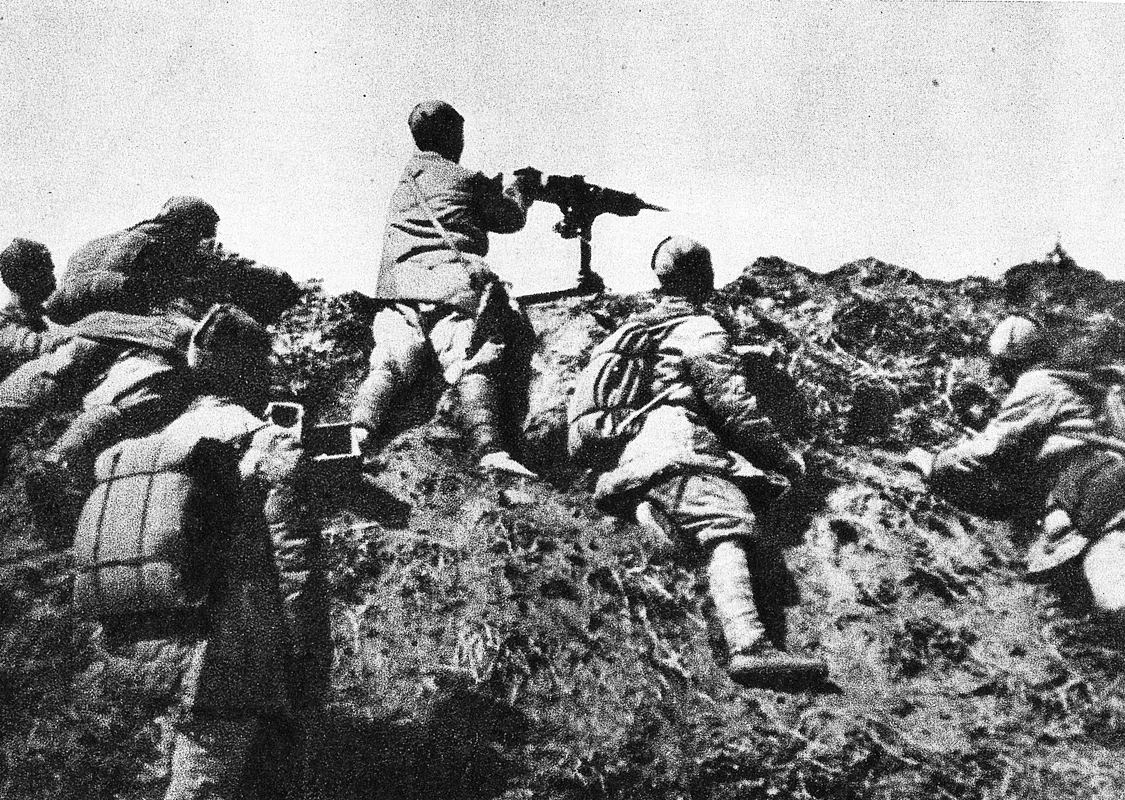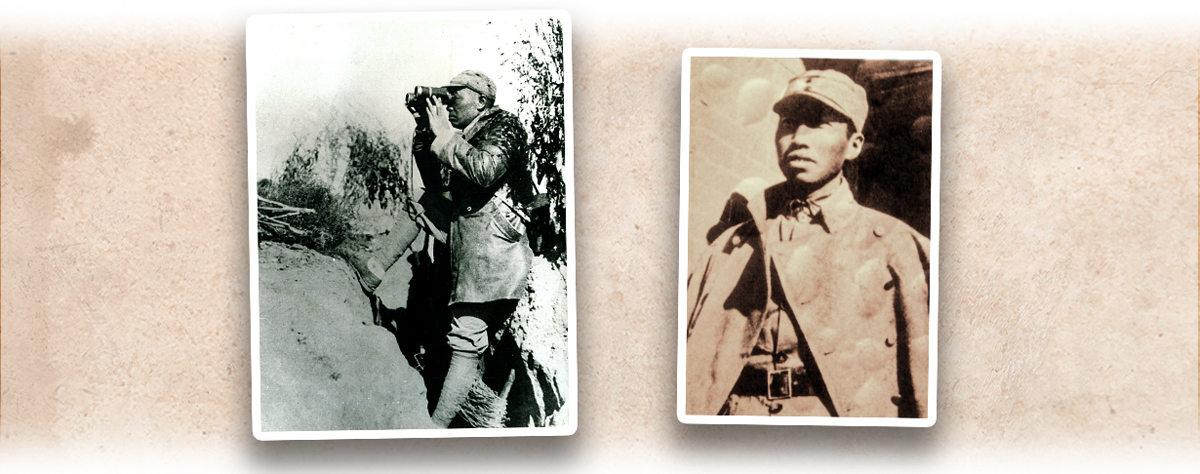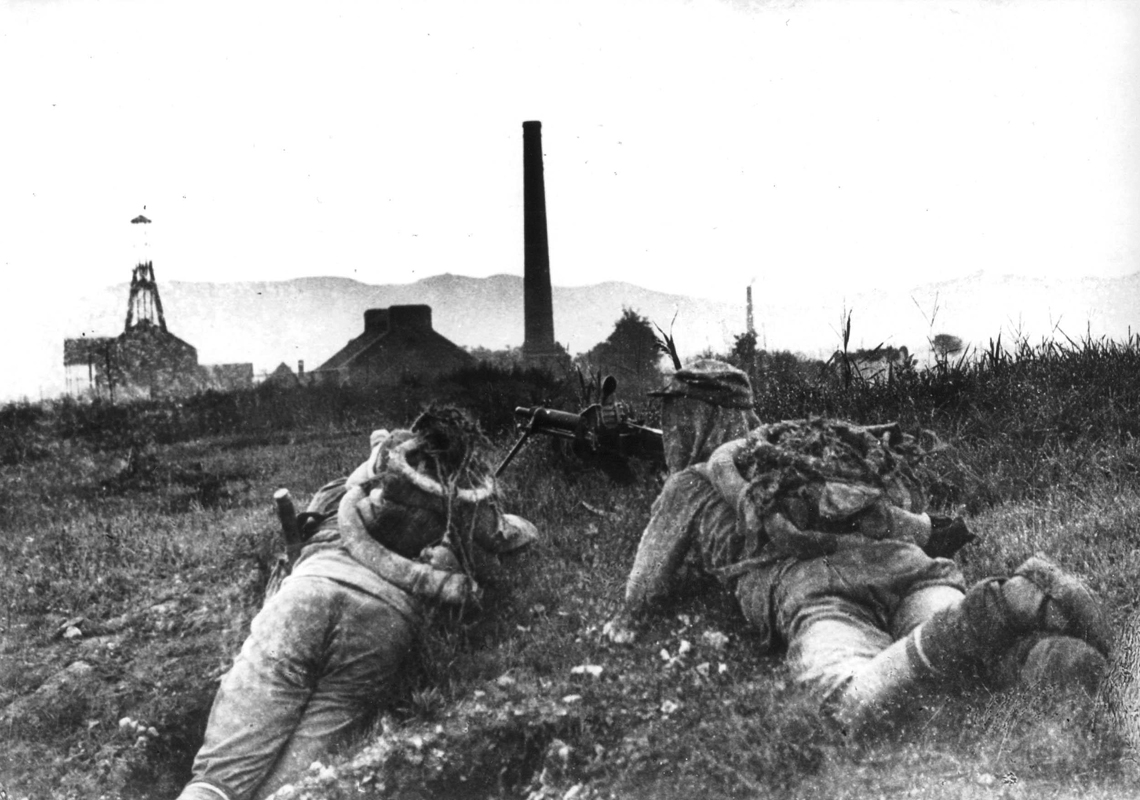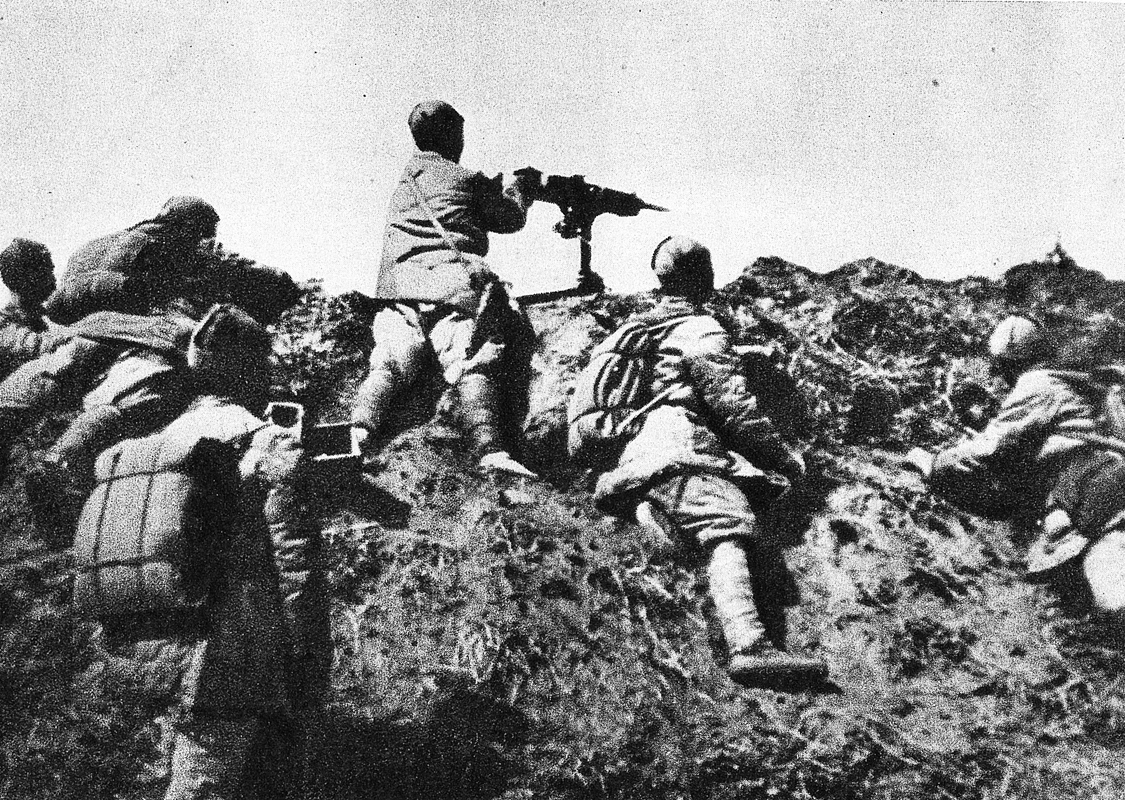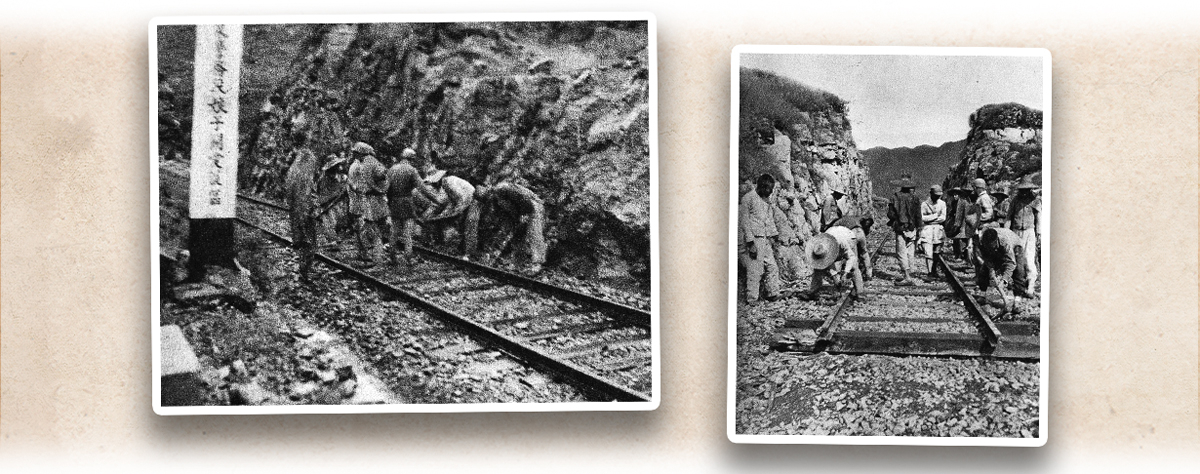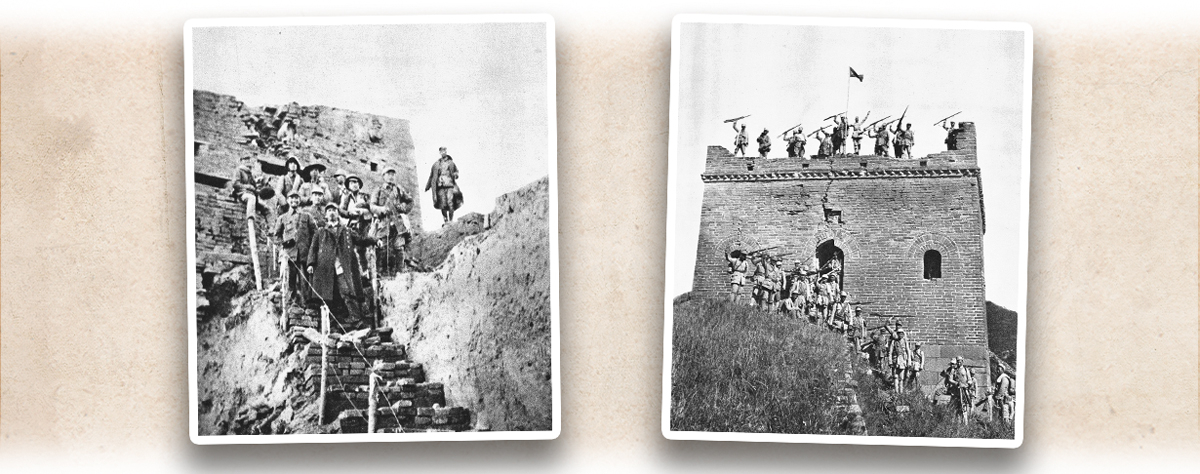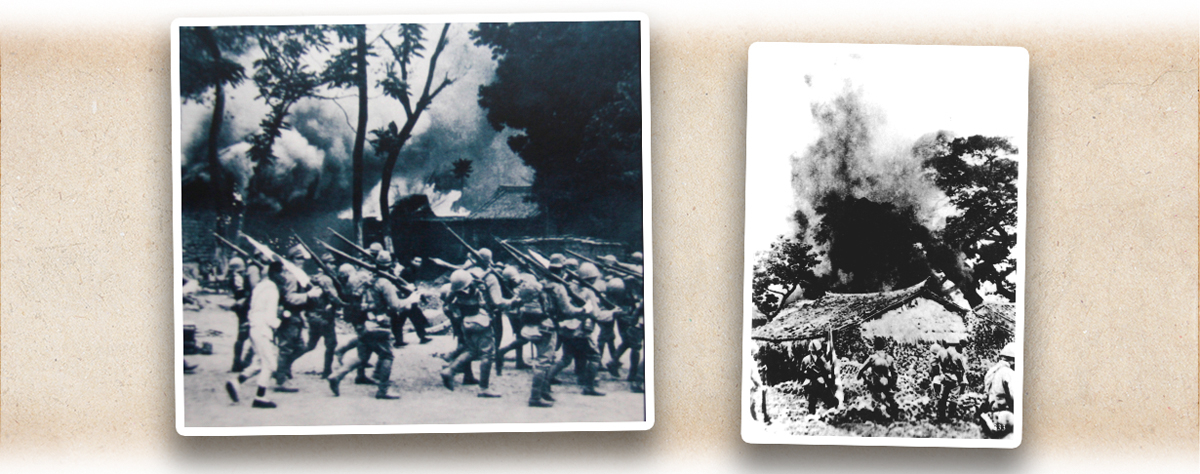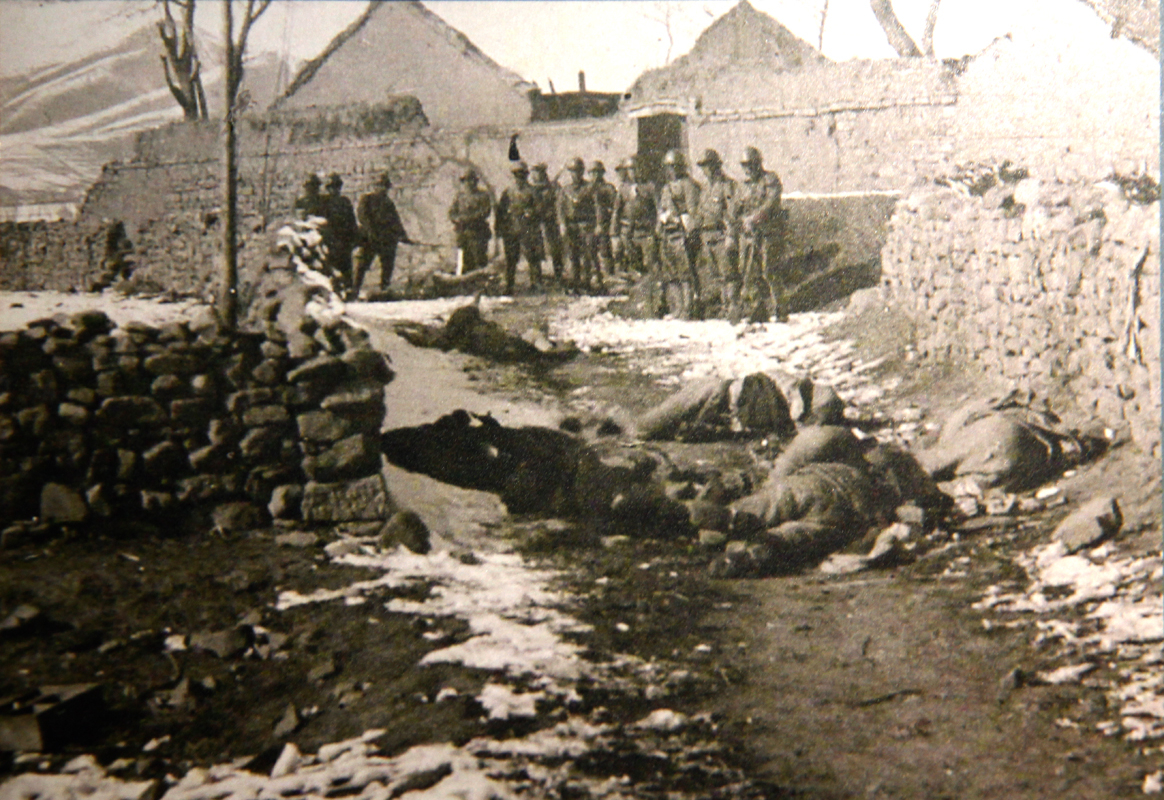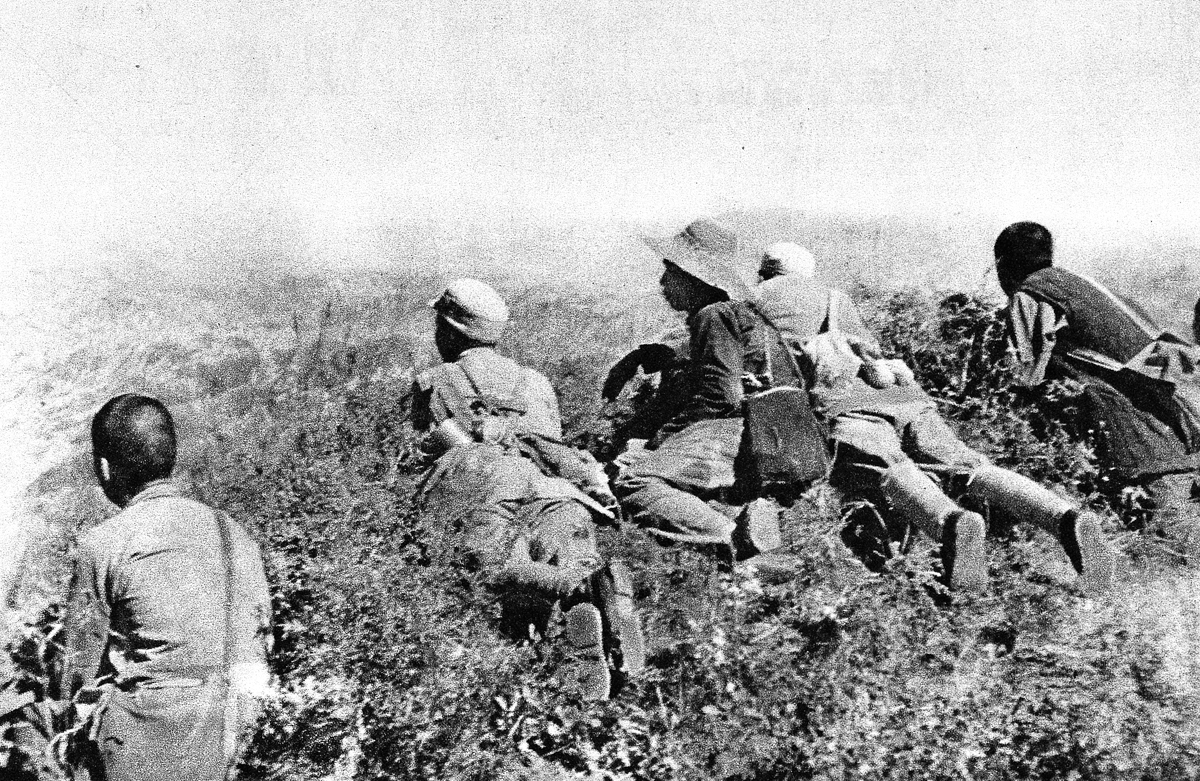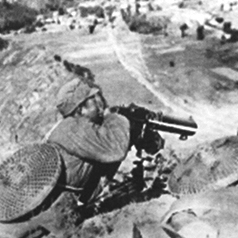In the fall and winter of 1940, the 8th Route Army led by the Chinese Communist Party (CCP, 中國共產黨) initiated a large-scale campaign against Japan in its rear area in North China. The campaign became known as the “Hundred Regiments Offensive” for the 105 regiments employed in the fighting.
On 8 August 1940, the headquarters of the 8th Route Army led by Zhu De (朱德), Peng Dehuai (彭德懷), and Zuo Quan (左權), ordered to launch a campaign deploying dozens of regiments to destroy the railway lines and military bases along those lines occupied by the enemy in provinces including Hebei (河北), Shanxi (山西), Suiyuan (綏遠), Chahar (察哈爾), and Rehe (熱河) in North China. The 8th Route Army augmented the manpower from initially 20-odd regiments to more than a hundred comprising around 400,000 soldiers since the fighting broke out on 20 August. The fighting was completed by 6 October, but skirmishes continued until the end of the year. The 8th Route Army engaged in over 1,820 battles of varying scales in the campaign, suffering 17,000 casualties and over 20,000 were poisoned. It also inflicted over 20,000 casualties on the Japanese Army and the Collaborationist Chinese Army, dealing a massive blow to the enemy.
After the conclusion of the Hundred Regiments Offensive, Okamura Yasuji, the Commander-in-Chief of the North China Area Army, issued the “Three Alls Policy” - to kill all, burn all, loot all - to “wipe out” bases of operations in the enemy’s rear area in North China. The Chinese forces, meanwhile, frequently engaged in tunnel warfare and land mine warfare, organising armed forces in the enemy’s rear area and guerrilla attacks along railways.
During the Total War of Resistance Against Japanese Aggression, conflicts such as the New Fourth Army Incident occurred in early 1941 between the Kuomintang of China (KMT, 中國國民黨) and the CCP, they still largely maintained their alliance against Japanese invasion.
|
|
The Hundred Regiments Offensive was an important campaign fought by the CCP-led forces during the Total War of Resistance Against Japanese Aggression. Why was this campaign rarely mentioned in official historical accounts before 1978? Peng Dehuai, the commander of the campaign, was singled out for persecution during the Cultural Revolution. Was this because of the Hundred Regiments Offensive? |
|
|
See answer below. |
Peng Dehuai, the Deputy Commander-in-Chief of the 8th Route Army (left). Zuo Quan, the Deputy Chief-of-Staff of the 8th Route Army (right). They were the key leaders of the Hundred Regiments Offensive.
The Hundred Regiments Offensive began on 20 August 1940. The photo shows the 8th Route Army in August 1940 assaulting the Jingxing Coal Mine (井陘煤礦), which at that time was controlled by the Japanese Army. Coal was an important economic and military resource. The destruction of Jingxing Coal Mine dealt a blow to the Japanese Army.
The 8th Route Army soldiers participating in the Hundred Regiments Offensive firing a machine gun at the Japanese forces.
During the Hundred Regiments Offensive, the 8th Route Army capturing the Niangzi Pass (娘子關), a key transportation hub between Shanxi and Hebei.
During the Hundred Regiments Offensive, the 8th Route Army destroying railways to cut off Japan’s transportation lines.
Two photos of the Hundred Regiments Offensive. Left: after the 386th Brigade of the 8th Route Army broke through the city wall of Yushe (榆社) of Shanxi, the Brigade Commander Cheng Geng (陳賡, the one with a camera hanging from his shoulder) and the Chief of Staff Zhou Xihan (周希漢, the one at the front wearing an overcoat) visiting the battlefront to evaluate the campaign result. Right: the 8th Route Army soldiers cheering from a beacon tower on the Great Wall after capturing Dongtuanbao (東團堡), a stronghold in Hebei’s Laiyuan County (淶源).
After the Hundred Regiments Offensive, the Japanese Army conducted a scorched-earth campaign across North China and instituted the “Three Alls Policy” - to kill all, burn all, and loot all. The photo shows the Japanese Army burning villages.
After the Hundred Regiments Offensive, incalculable numbers of civilians died as a result of the Japanese scorched-earth campaign and the “Three Alls Policy” in North China.
After the Hundred Regiments Offensive, the 8th Route Army continued to attack the Japanese Army from the enemy’s rear area.
Even during the War of Resistance, the KMT-CCP cooperation was not without conflicts, the largest of which being the New Fourth Army Incident or South Anhui Incident (皖南事變) from 4 to 14 January 1941. During this incident, the NRA attacked the CCP-led New Fourth Army. It dealt a heavy blow on the New Fourth Army, with its commander Ye Ting (葉挺) captured, and the deputy commander Xiang Ying (項英) killed. Chen Yi (陳毅) then assumed the role as acting commander. Although the incident brought tensions to the two parties, they managed to sustain the cooperation till the victory of the War of Resistance. Left : the New Fourth Army during the South Anhui Incident in early January 1941. Right: A hand-written epigraph by Zhou Enlai (周恩來) was published on Xinhua Daily (《新華日報》) in Chongqing (重慶) after the South Anhui Incident occurred on 17 January 1941. It reads, “An historical injustice, a leaf in Jiangnan (江南). Weapons are wielded at family members. What good does infighting accomplish?” The “leaf” here refers to Commander Ye Ting (in Chinese, the surname Ye can also mean leaf).
|
|
The Hundred Regiments Offensive was an important campaign fought by the CCP-led forces during the Total War of Resistance Against Japanese Aggression. Why was this campaign rarely mentioned in official historical accounts before 1978? Peng Dehuai, the commander of the campaign, was singled out for persecution during the Cultural Revolution. Was this because of the Hundred Regiments Offensive? |
|
|
The Hundred Regiments Offensive once gained high recognition from the CCP Central Committee when it was concluded. However, Japan’s scorched-earth policy took a massive toll on the 8th Route Army from 1941-42, during which the Deputy Chief of Staff Zuo Quan was killed. Peng Dehuai also received criticism from Mao Zedong (毛澤東) and others for not fully carrying out the CCP’s military strategy during the stalemate phase of the war (i.e. “Basically guerrilla warfare, but mobile warfare can be employed when saw fit”). Peng was accused of turning the situation into in a war of attrition, revealing the CCP’s anti-Japanese forces prematurely and unnecessarily sacrificed some of them. It even inflicted heavy casualties on the 8th Route Army itself. In 1945, the CCP held a seminar in Yan’an (延安) for work evaluation in North China. The seminar condemned the Hundred Regiments Offensive, and Peng was forced to make a self-criticism. During the anti-rightist Lushan Conference (廬山會議) in 1959, one of Peng’s convictions for commanding the campaign was labelled as “a product of Wang Ming’s (王明) rightist opportunism”. On 24 February 1967, the Jinggangshan Regiment (井岡山兵團), an organisation of the Red Guard at Tsinghua University (清華大學), released the sixth periodical of its big-character poster publication Regiment Battle Report, in which an article titled Take Down Peng Dehuai, the Great Conspirator, the Great Ambitionist, the Great Warlord claimed that Peng opposed Mao Zedong’s great strategy to preserve military power. It continued, “(Peng) risked lives unnecessarily, mobilising 105 regiments comprised of 400,000 soldiers to launch an all-out attack and engage in an arduous war of attrition. Peng the thief supported Chiang Kai-shek (蔣介石) with his whole heart and thus earned Chiang’s favour.” It was not until 1978 that the CCP Central Committee reversed its opinion on Peng that they began to adopt a largely positive stance regarding the Hundred Regiments Offensive. |
Source of most photos used in this feature piece: Fotoe.




